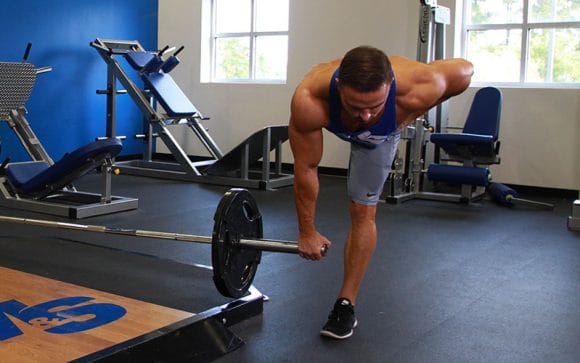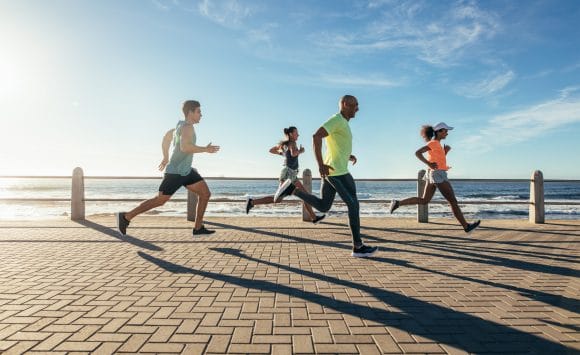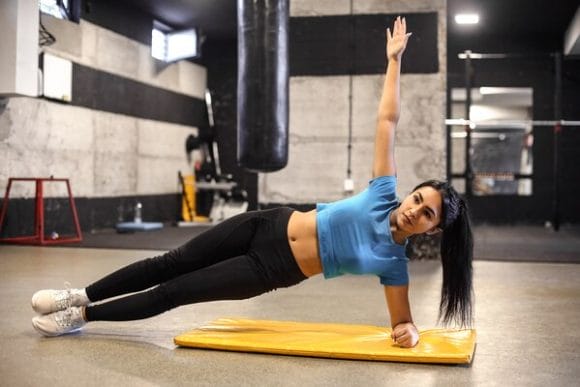What happens to your fitness during lockdown &
Post-lockdown Training

The covid rollercoaster is starting to round the final bend and We can see the light at the end of the tunnel. There is still some uncertainty of course, and after a year of stop start training many athletes and recreational enthusiast alike are planning what training will look like later in 2021. youth and amateur sports will begin to open back up as well. When training is finally able to resume as “normal,” our instincts will be to dive right back into where we were pre-pandemic, but it is important to approach our preparation with thoughtfulness. This article may be geared toward return to sport, but the principles still apply to the general fitness enthusiast as well.
What should training look like whilst in lockdown?
- Plan; have a plan and set up some accountability. both of these can be looked after by having a coach to guide you with a program and adaptations for your unique situation and keeping you accountable with regular contact and check-ins.
- Strength; Training at home likely will have to be geared away from pure strength training, due to lack of load. Making training harder and maintaining strength in varying tissues including muscle will likely involve tempos, pauses, shorter rest periods, and higher rep ranges. These training variables will need to be utilized at different intervals depending on the volume required and the stimulus prescribed.
- Work Capacity; Training at home gives you the chance to develop your work capacity, something that can often get overlooked. Imagine that someone was as unfit that a set of 10 Bodyweight squats made them so puffed out that they needed 5 minutes to catch their breath. This person’s poor work capacity is the limiting factor in their progress, as they are not able to do the amount of work needed to improve the stimulus. They can not complete enough sets to drive the adaptions required for progress. Then working on some simple work capacity would be a primary goal during lockdown. Some people would fall into the trap that in order to improve work capacity we must do lots of work and it should be intense, but often the inverse is true. Some lighter aerobic work with appropriate rest intervals would improve this facet of fitness. Everyone sits somewhere along this spectrum. On one end is the individual just mentioned, unable to perform more than 5 total sets within a session. On the other is a high-level runner who does 10 sessions on the track each and every week. This runner is going to find it much easier to recover between sets of squats, as well as between sessions in the gym due to their high level of general fitness and aerobic energy system development. work capacity is, essentially, the total amount of work you can perform, recover from, and adapt positively to. Greater work capacity = greater ability to positively stress the system = gains. This is why work capacity is so important for long-term progress in the gym.. or at home.
- Understand failure, but don’t strive for it. Doing a significant amount of training very far away from failure is not useful when it comes to growing muscle. Right now, most of us have access to limited loads, or the loads you do have access to are fixed (e.g a 10kg bag of coal or 1 set of 15kg dumbbells). However, you can still get quality training in. How? By training close to failure. What is the skill at the crux of training within proximity to failure? RPE (Perceived Rate of Exertion) and learning how to rate your RPEs somewhat accurately. So using your time in this lockdown to understand what your limits are. (Often people don’t get results due to the fact that they don’t “get comfortable with being uncomfortable”, essentially, they don’t know how hard they can push themselves. Figuring out how close you are to failure is a skill and skills can be learned over this period, especially with the help of a seasoned coach.
So what should we expect and prepare for upon full resumption?
What type of impact could we expect to see after this period of interrupted training? Many of us have been doing something, but we haven’t had the access to the full gym experience for extended periods.
It only takes approximately four weeks to observe a 4-14% drop in aerobic capacity (5). While we might be able to maintain strength for 2-3 weeks, after eight weeks, there could be a 7-8% loss in strength (6). Additionally, Kubo and colleagues found that after an eight-week detraining period, tendon stiffness returned back to pre-training levels (3). Basically, we will not be able to sprint as fast, jump as high, or run as far.
Hopefully, training and preparation hasn’t completely halted, but to some extent, it has been disrupted. How athletes, and the regular gym member approach return to training has the potential make an outstanding season or cause a season-long battle with nagging injuries. It’s Like cramming the leaving cert curiculum worth of studying into a single night, making up for potentially two to three missed months of training in a couple of weeks is not the best strategy for long-term success.
Though there will still be a couple of months before the traditional preseason (for some sports such as club rugby), as a result of the training disruption from lockdowns, everyone- athletes and regular members alike- would be best served approaching a return to training like coming out of offseason.
Despite the best offseason plans, injury rates are still highest during preseason (2). It has been hypothesized that returning athletes are unable to handle the training stress that is placed on the body.“at-home” plans just isn’t the same as in-person training and full team practices.
To highlight the need for a progressive approach of a return to training, I’d like to call some attention to a few headlines from the last lockdown. With just 10 days of full team training, the Bundesliga, professional German football league, reported 14 injuries after the first weekend of matches.
We know there is a need for a progressive return to training, but how do we go about it?

In the summer of 2019, the National Strength and Conditioning Association and the Collegiate Strength and Conditioning Coaches Association came together to publish guidelines for coaches on best practices for programming a return to training for athletes (1). The guidelines outline three scenarios for returning to training:
1) returning athletes who have experienced a 2 week break or longer or for student athletes who are beginning under a new head sport coach,
2) new athletes such as freshman or transfer student-athletes that are coming off a period of inactivity, or all student-athletes who are beginning under a new head strength and conditioning coach,
and
3) student-athletes returning to training after an incident of exertional rhabdomyolysis or exertional heat illness. For this article, I would like to focus primarily on scenario one, those coming off of a two-week break or longer.
It is important to note that regardless of the scenario, the first step to returning to training is a pre-participation medical evaluation by a qualified professional. Once cleared for activity, a logical place to start is assessment, whether it be a test of endurance, strength, or both. If performing a conditioning test in the first week back, the guidelines suggest reducing the total workload by 20% (1). Workload can be reduced through just about any means, including reduced intensity, volume, increased rest time, or combination of these three variables. If the conditioning assessment is performed the second week back, it is recommended to decrease the workload by 10%. Using the 12-minute run as an example, if performed in the first week back, the test would only last for 9 minutes and 36 seconds. This test performed in week two would last 10 minutes and 48 seconds. We have used the 10 minute air bike test with similar perimeters.
Often, preseason practices consist of high volumes of conditioning to quickly elevate athlete fitness. Counter to that, the NSCA/CSCCA guidelines recommend that conditioning activities in week 1 be reduced by 50%, followed by a 30% reduction in the second week after the period of inactivity. Remember, these guidelines are for returning athletes. For new athletes, including transfers, week three would consist of a 20% reduction, followed by a 10% reduction in total weekly volume in week four (1).
When it comes to the weight room, the guidelines reference the FIT rule for weight training. The FIT rule outlines recommendations for frequency (F), intensity relative volume (I), and time of rest interval (T). The suggested frequency is no more than three days per muscle group for week one and four days per muscle group on week two (1). If a split body (upper/lower) routine was programmed, the athletes could theoretically lift six days in the first week. Most of our programs are full body, which would limit the weight training to the base recommendations.
Intensity relative volume (IRV) is a strategy for quantifying the relative intensity of the weight training session. It is calculated by the equation: , and includes warm up sets. Based on a review paper by McMaster et al., it is recommended that IRV units per movement or muscle group stay between 11 and 30 during the first two weeks (4). Figure 1 demonstrates an appropriate and inappropriate IRV example.

The last part of the FIT rule is time of rest interval, or work:rest ratio. Typically, rest during a weight training session will be more than sufficient; however, the Joint Committee sets the minimum standard of 1:4 work-to-rest for the first week back, and 1:3 during the second week (1).
In summary, after a period of inactivity or disrupted training of two weeks or more, athletes should not dive off the deep end into training. we must acknowledge there has definitely been a disruption in normal training over the past twelve months for a majority of athletes. Returning programs should progress volume, intensity, and density over two to four weeks preceded by a pre-participation medical evaluation to ensure the safety of those participating.
Key points
During Lockdown:
- athletes and regular fitness enthusiasts should maintain their strength and work capacity as much as possible during lockdown.
- Skill acquisition is important to a safe return to training, both in the understanding of RPE and motor control (moving well).
Post LOCKDOWN:
- Athletes should not try to make up two months of training in 10-14 days
- To best address athletes coming back from stay-at-home orders, we can look to how athletes are handled after periods of inactivity such as summer off-season
- Four weeks of inactivity can result in up to a 14% loss in aerobic capacity.
- Eight weeks of detraining can lead to 8% loss in strength and return to pretraining tendon stiffness levels
- Conditioning testing should be reduced by 20% in week one or 10% in week two
- General conditioning should be reduced by a weekly volume of 50% in week one and 30% in week two followed by full volume in week 3
- Resistance training
- Frequency of training should be no more than three times per week per movement
- Intensity relative volume should not go above 30 units in the first two weeks of training
- Work:rest ratio should be no less than 1:4 during the first week, and 1:3 during the second week
References
- Caterisano A., Decker D., Snyder B., Feigenbaum M., Glass R., House P., Sharpe C., Waller M., Witherspoon Z. CSCCa and NSCA Joint Consensus Guidelines for Transition Periods: Safe Return to Training Following Inactivity. Strength Cond J. 41.3 (2019).
- Hootman J.M., Dick R., Agel J. Epidemiology of Collegiate Injuries for 15 Sports: Summary and Recommendations for Injury Prevention Initiatives. J Athl. Train 42.2 (2007): 311-319.
- Kubo K., Ikebukuro T., Yata H., Tsunoda N., Kanehisa H. Time Course of Changes in Muscle and Tendon Properties During Strength Training and Detraining. J Strength Cond Res. 24.2 (2010): 322-331
- McMaster D.T., Gill N., Cronin J., McGuigan M. The Development, Retention And Decay Rates Of Strength And Power In Elite Rugby Union, Rugby League And American Football: A Systematic Review. Sports Med 43: 367–384, 2013.
- Mujika I, Padilla S. Detraining: Loss of Training-Induced Physiological and Performance Adaptations. Part I. Sports Med 30 (2000): 79–87.
- Schneider V., Arnold B., Martin K., Bell D., Crocker P. Detraining effects in college football players during the competitive season. J Strength Cond Res. 12.1 (1998): 42–5.
